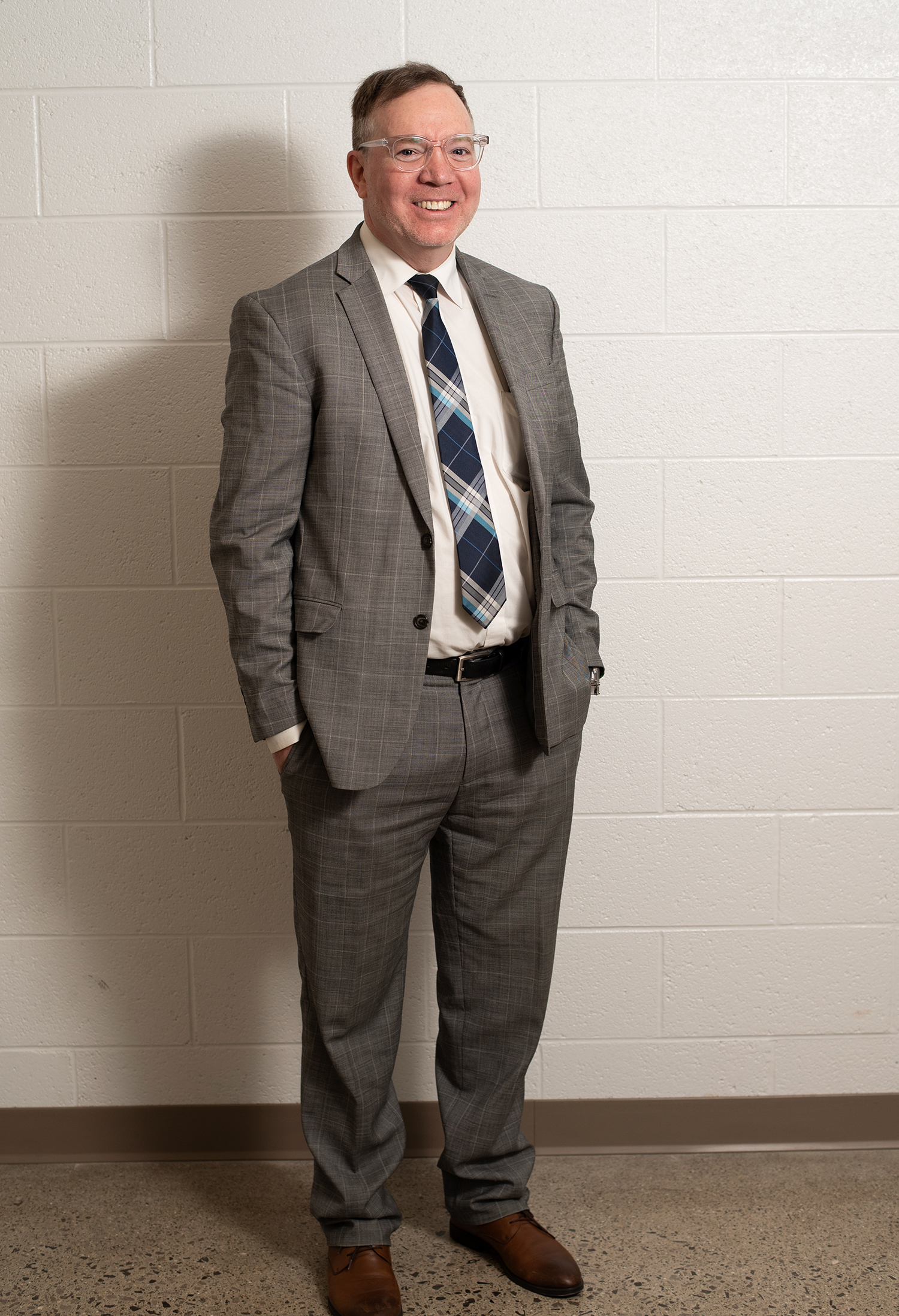Saginaw Valley prof talks design and preparing students for careers
MEA member J. Blake Johnson received MEA’s Distinguished Servant of Public Education Award for the Cardinal Solutions program he founded at Saginaw Valley State University (SVSU) in 2013, which allows students to do design and other work for local nonprofits and businesses before graduation.
____________________________________________________________________

What art and design work did you do before becoming a professor?
I went to ArtCenter College of Design in Pasadena, California, and in my second job out of college I worked for an agency that designed amusement parks. That’s how I also got Disney on the resume, NBC, Sony. A lot of big names – I got lucky. Then my wife and I moved to Portland, Oregon, and I found a job at an agency designing for point-of-purchase displays, there we did work for Microsoft, Xbox, Nike, SKECHERS. So I got all kinds of crazy opportunities. Looking back, I’m grateful for these opportunities.
How did you end up teaching at SVSU?
The job in Portland was an exciting time, but it was also consuming. I would just live at the office. And my wife said, “You always wanted to go back to college and be an educator. Why don’t you do it now?” I’m glad I did—I got into the MFA program at University of Idaho. It’s a three-year program that gives you the opportunity to teach as instructor of record for those three years. So you’re teaching from day one. It’s trial by fire, but I survived and I thought, OK – I like this. I can do this. Then I got this job at SVSU in 2007 and for me it was coming back home as I was raised in Michigan as a kid.
Describe Cardinal Solutions – do students experience what it’s like to work for a client?
Absolutely. The process starts when a client approaches us with a particular service request such as a website redesign. I then collaborate with faculty across our university to form a team of needed students, drawn from various departments such as Marketing, Graphic Design, and Technical Writing. This diversified team leverages their combined skills to provide the client with the most effective solution to their problem. Together that team works to the client’s goals working together to solve real problems. It’s a heavy load, but real responsibility creates real work experience that just prepares them. That’s why, in the end, I would love to a see the Solutions program grow to more locations.
Do the clients pay for the work?
Yes, and most of that comes back to the students in the form of a scholarship. We tried doing things for free. Surprisingly, that doesn’t work very well because, without a buy-in, the client’s not really engaged. And so we started charging. I don’t think it’s an outrageous fee: 15 weeks of work for $600 per student. The university handles the contracts and the money. I’m not trying to pay people, and I’m not trying to run a business. What I’m trying to do is give students real-life opportunities and the chance to earn a scholarship and serve the community. And it seems to be working well.
What’s a driving message you have for students when they go forth into careers?
I tell them the kind of job you want as a designer is one where you’re trusted. And you can only have that kind of job if you can communicate well, because you have to explain your ideas to both the client and the art director, and the owner – both in written and verbal form. So I make sure our students stand up; have critiques; and learn to present. When they write summaries of assignments, they learn how to put design ideas into their own words. That’s very important to me.
Check out samples of Solutions projects by visiting the Case Studies section of the Cardinal Solutions site.


